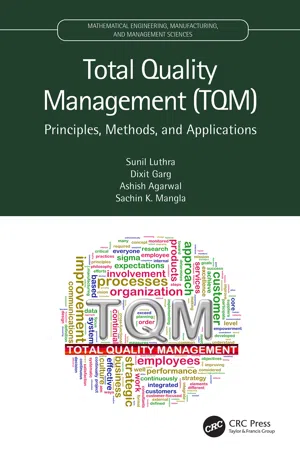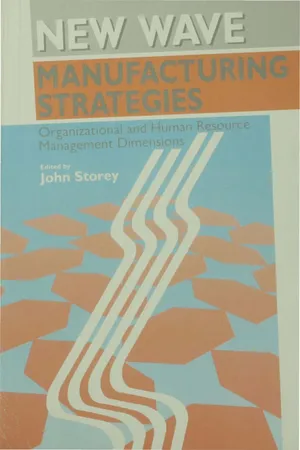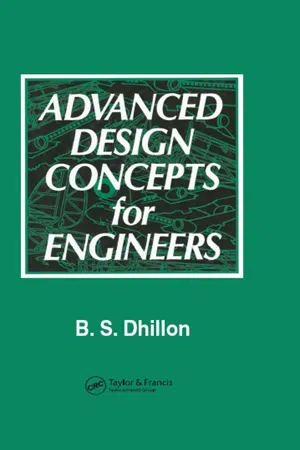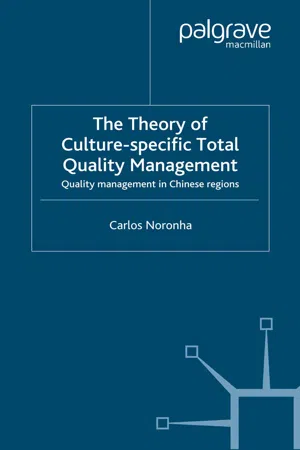Business
Evaluating Total Quality Management
Evaluating Total Quality Management involves assessing the effectiveness of TQM practices within an organization. This includes measuring performance against established quality standards, identifying areas for improvement, and gathering feedback from employees and customers. The evaluation process aims to ensure that TQM initiatives are contributing to enhanced quality, customer satisfaction, and overall business success.
Written by Perlego with AI-assistance
Related key terms
1 of 5
12 Key excerpts on "Evaluating Total Quality Management"
- eBook - ePub
Total Quality Management (TQM)
Principles, Methods, and Applications
- Sunil Luthra, Dixit Garg, Ashish Agarwal, Sachin K. Mangla(Authors)
- 2020(Publication Date)
- CRC Press(Publisher)
2 Total Quality Management (TQM)2.1 DEFINITION OF TOTAL QUALITY MANAGEMENT (TQM)
Total Quality Management (TQM) seeks to integrate all organisational functions, such as marketing, finance, design, engineering, production, customer service, etc. to focus on meeting customer needs and organisational objectives.TQM is defined as:- Total = Made up of the whole.
- Quality = Degree of excellence of product/service provider.
- Management = Art of handling, controlling and directing.
TQM sees an organisation as a set of processes. It argues that organisations must strive to continually improve these processes by integrating the knowledge and experiences of workers. The simple goal of TQM is ‘To do things right, the first time, always.’ TQM is infinitely variable and adaptable. This management approach covers several areas, although it was originally applied to manufacturing operations. For several years, it has only been used in this field. From now on, TQM is identified as a generic management tool, which also applies to services (health and safety), industrial enterprises, and the public sector. There is a series of evolutionary units, with different sectors creating their own versions of the common predecessor.Total Quality Management is also defined as a customer-driven process and goals for continuous improvement of business operations. It ensures that all related work (in particular the work of the employees) is directed towards the common objectives of improving the quality of the product or the quality of the service, as well as the production or execution process of the services. However, the focus is on evidence-based decision-making, with the use of performance measures to monitor progress (Deming). - eBook - PDF
New Wave Manufacturing Strategies
Organizational and Human Resource Management Dimensions
- John Storey(Author)
- 1994(Publication Date)
- SAGE Publications Ltd(Publisher)
6 TOTAL QUALITY MANAGEMENT Patrick Dawson Total Quality Management (TQM) is a widely used strategy for increasi ng organizational flexibility and employee commitment to change. It originated in America, was developed in Japan and is now forming a central part of strategic decision-making in companies in North America, Asia, Europe and Australia and New Zealand. Unlike quality circles, TQM is not viewed as a purely operational technique for improving shopfloor partic ipation but, rather, is seen as a method for integrating programmes of operational con-trol with the strategic management of a company. In this way, TQM has developed from a series of specific tedmiques, such as the use of Statist ical Process Control, to the complete management of intra-company relations and the creation of policies and practices aimed at securing employee in-volvement (Dawson, 1994). The 1990s have seen a movement away from Total Quality Control (TQC) which, following Feigenbaum (1961), had a strong associat ion with production, towards the management of organiza-tional culture and the enlisting of all parts of an organization in the systema-tic effort for quality (Hames, 1991). The emphasis is now on the involvement of all levels of employees, in all different types of organization, for the purpose of continuously refining the process of service and product delivery with the aim of improving operational efficiencies and increas ing employee com mitmen t at work (Macdonald and Piggott, 1990). Quality issues are no longer rest ricted to production departments or manufacturing companies, but are the concern of the whole gamut of public and private enterprises who wish to enhance their system of employee relations, reduce operational inefficiencies and increase their competi tive position (Ballantyne, 1992; Dawson and Patrickson, 1991). - eBook - ePub
- Larry Webber, Michael Wallace(Authors)
- 2011(Publication Date)
- For Dummies(Publisher)
Continuous quality improvement: This concept means that every worker in the company feels empowered to improve his or her individual processes and is encouraged to recommend changes to larger processes. Each person takes ownership in order to make products right the first time and to stop bad products from reaching the end of the line.In this chapter, we cover the basic principles and steps of Total Quality Man- agement and the techniques and tools your company needs to get started. We also introduce the roles of different folks in TQM and show you how to keep the quality process working continuously.Total Quality Management in a Nutshell
Total Quality Management (TQM) is a company-wide, proactive effort to improve quality. Total means that all business functions (engineering, production, marketing, and so on) focus on defining and fulfilling (the ever-shifting) customer needs. Each company tailors TQM to fit its circumstances. The unifying theme is to “do the right things, the right way, the first time.”TQM is a result of earlier quality innovations from such eminent experts as W. Edwards Deming, Joseph Juran, Philip B. Crosby, and Kaoru Ishikawa. Like all great ideas, it combines the best techniques of each innovator into a “total” program. TQM was the first quality system that taught businesspeople to look to the process steps in order to improve. One of its greatest improvements was the realization that quality had to be moved out of the back office and into everything an organization does.In the following sections, we explain TQM’s principles, steps, pros, and cons.The guiding principles
Total Quality Management requires your company executives’ ongoing commitment to change. Rather than being the duty of a “quality department” in some distant, dark back room, quality improvement becomes everyone’s business. To be considered total, quality has to permeate all levels of the organization. Here are the TQM principles:Management commitment: - eBook - ePub
Construction Management
New Directions
- Denny McGeorge, Patrick X. W. Zou(Authors)
- 2012(Publication Date)
- Wiley-Blackwell(Publisher)
Of all of the concepts outlined in this book, TQM is one of the broadest and most wide ranging. In some ways it is an umbrella under which many other concepts are encompassed. As with other concepts in this book, there is no single accepted definition of TQM. Rampsey and Roberts [8], define TQM as:… a people focused management system that aims at continual increase in customer satisfaction at continually lower real cost. TQM is a total system approach (not a separate area or program), and an integral part of high level strategy. It works horizontally across function and department, involving all employees, top to bottom, and extends backwards and forwards to include the supply chain and the customer chain.(Interestingly, the construction industry invariably uses the word ‘client’ as opposed to ‘customer’ to describe a purchaser of good services, perhaps on the basis that ‘client’ has more sophisticated connotations than ‘customer’. In Webster’s Dictionary [9], these words are given as synonymous with one another.)In our view Rampsey and Roberts’ definition encompasses the fundamental principles of TQM. First, TQM must be a total approach to quality. Whereas in the past quality was concerned with parts of the organisation, such as the final product or customer relations, TQM is concerned with the whole system as an integrated unit. Second, TQM is ongoing. Whereas in the past quality was viewed as a system that could be put in place to improve certain sections of the product or organisation, TQM is a continuous process. The view is now taken that, however good a system has become, it can always be improved further. Finally, the goal of TQM is customer satisfaction. In the past, quality systems have been aimed towards improving products, not customer satisfaction. These are not necessarily the same thing, since it is possible to improve a product without realising that it is not in fact what the customer wants. - eBook - ePub
Total Quality Management
Text, Cases, and Readings, Third Edition
- Joel E. Ross, Susan Perry(Authors)
- 2017(Publication Date)
- CRC Press(Publisher)
external customers. An enlarged definition of quality should be used to embrace all business processes, rather than just manufacturing.The systems approach, by definition, requires the integration of organizational activities for achievement of a common goal. This goal, under the TQM form of organization, remains the satisfaction of customer requirements, but customers are now considered to be both outside as well as within the organization.23 The process applies whether relating to a final customer or an internal customer; it is a participative process involving supplier and customer in an active dialogue. Examples include:■ Metropolitan Life Insurance Company has made a major commitment to improve quality by implementing a horizontal management approach that is built on management commitment, employee involvement, and knowledge of internal suppliers.24■ Campbell USA has aimed its latest quality emphasis, its “Quality Proud” program, at the administrative and marketing activities of the company. Job descriptions, promotions, pay, and bonuses for all employees are linked to the results of the new program.25As a major step in its transformation to a total quality organization, DEC asked each of its 125,000 employees to answer in writing the following questions: 1. What business process are you involved in? 2. Who are your customers (that is, the next step in the processes you are involved in)? 3. Who are your suppliers (that is, the preceding step in the processes you are involved in)? 4. Are you meeting the expectations of your customers? 5. Are your suppliers meeting your expectations?6. How can the processes be simplified and waste eliminated?26■ DEC reported that this simple survey had a massive impact In the short run, countless redundant activities were discovered and eliminated. In the long run, DEC employees now think in terms of meeting both internal and external customer expectations. (This concept is also illustrated in Figure 9-2. - eBook - PDF
- B.S. Dhillon(Author)
- 1998(Publication Date)
- CRC Press(Publisher)
Another important factor involved in improving product quality is the commitment of top management to show consistent enthusiasm so that the employees seriously consider the importance of quality. There are many differences between traditional quality assurance manage-ment and TQM. Thus, for the effective practicing of the TQM concept, a proper understanding of such differences is essential. Table 8.1 presents the compari-son of traditional and total quality management [3,7]. 8.3 TQM PRINCIPLES AND ELEMENTS Broadly speaking, TQM is based on two fundamental principles: customer satisfaction and continuous improvement. Customers could either be internal 154 T O T A L Q U A L IT Y M A N A G E M E N T or external, but the external customers are not part of the organization man-ufacturing the good/product or service. The use of the “market-in” concept allows a strong customer orientation that recognizes that every work process is made up of stages. In turn, during each stage, customer input is sought for determining the changes that should be made to better satisfy the customer’s requirements [ 11 ]. Continuous improvement is an important factor to meet the quality challenge. In fact, Tom Peters [12] stated, “Excellent firms don’t believe in excellence— only in constant improvement and constant change.” The incremental improve-ment and maintenance tasks are accomplished through process improvement and control. In any case, with respect to TQM, management performs two func-tions: ( 1 ) continuously makes improvements to methods and procedures used currently through process control and ( 2 ) directs efforts to achieve important advances in concerned processes. - eBook - PDF
- Vincent K. Omachonu, Joel E. Ross(Authors)
- 2004(Publication Date)
- CRC Press(Publisher)
This goal, under the TQM form of organization, remains the satisfaction of cus-tomer requirements, but customers are now considered to be both outside as well as within the organization. 16 The process applies whether relating to a final customer or an internal customer; it is a participative process involving supplier and customer in an active dialogue. Examples include: 170 Principles of Total Quality, Third Edition Metropolitan Life Insurance Company has made a major com-mitment to improve quality by implementing a horizontal man-agement approach that is built on management commitment, employee involvement, and knowledge of internal suppliers. 17 Campbell USA has aimed its latest quality emphasis, its “Quality Proud” program, at the administrative and marketing activities of the company. Job descriptions, promotions, pay, and bonuses for all employees are linked to the results of the new program. 18 As a major step in its transformation to a total quality organization, the organization formerly known as DEC (acquired by Compaq in 1998) asked each of its 125,000 employees to answer in writing the following questions: 1. What business process are you involved in? 2. Who are your customers (that is, the next step in the processes you are involved in)? 3. Who are your suppliers (that is, the preceding step in the processes you are involved in)? 4. Are you meeting the expectations of your customers? 5. Are your suppliers meeting your expectations? 6. How can the processes be simplified and waste eliminated? 19 DEC reported that this simple survey had a massive impact. In the short run, countless redundant activities were discovered and eliminated. In the long run, DEC employees now think in terms of meeting both internal and external customer expecta-tions. - eBook - PDF
Operations Management
An Integrated Approach
- R. Dan Reid, Nada R. Sanders(Authors)
- 2020(Publication Date)
- Wiley(Publisher)
TABLE 5.3 Concepts of the TQM Philosophy Concept Main Idea Customer focus Goal is to identify and meet customer needs. Continuous improvement A philosophy of never-ending improvement. Employee empowerment Employees are expected to seek out, identify, and correct quality problems. Use of quality tools Ongoing employee training in the use of quality tools. Product design Products need to be designed to meet customer expectations. Process management Quality should be built into the process; sources of quality problems should be identified and corrected. Managing supplier quality Quality concepts must extend to a company’s suppliers. TABLE 5.3 The Philosophy of TQM 145 current procedures, collect data, and identify problems. This information should then be studied and used to develop a plan for improvement as well as specific measures to evaluate performance. • Do The next step in the cycle is implementing the plan (do). During the implementation process managers should document all changes made and collect data for evaluation. • Study The third step is to study the data collected in the previous phase. The data are evaluated to see whether the plan is achieving the goals established in the plan phase. • Act The last phase of the cycle is to act on the basis of the results of the first three phases. The best way to accomplish this is to communicate the results to other members of the company and then implement the new procedure if it has been successful. Note that this is a cycle; the next step is to plan again. After we have acted, we need to continue evaluating the process, planning, and repeating the cycle again. Benchmarking Another way companies implement continuous improvement is by studying business practices of companies considered “best in class.” This is called bench- marking. The ability to learn and study how others do things is an important part of continu- ous improvement. - eBook - PDF
- Marc Holzer(Author)
- 2019(Publication Date)
- CRC Press(Publisher)
Total quality management and customer focus 669 A. Customer Focus The underlying assumption of TQM is a focus on the customer. It is assumed that the customer is the judge of quality, and productivity improvement, in principle, does not exist without customer satisfaction. Customers include both internal (employees) and external customers (citizens). Internal customers receive “any work output in the service or production process,” and external customers purchase the product (McGo-wan and Wittmer, 1997). Therefore customer satisfaction is the utmost priority of any organization. Both employee and citizen satisfactions are important elements with which to measure productivity and performance in any organization. B. Continuous Improvement Another important assumption of TQM is found in the emphasis on continuous improvement. In fact, all productivity improvement programs require feedback from both employees and citizens on a regular basis. Continuous improvement includes: “(1) enhance value to the customer through new and improved products and services, (2) reduce errors, defects, and waste, (3) improve responsiveness and cycle-time performance, and (4) improve productivity and effectiveness in the use of all resources (McGowan and Wittmer, 1997, p. 313).” As Swiss (1992, p. 358) points out, “Quality is not a static attribute; it is a constantly changing target because it represents a delighted customer.” It should also be noted that continuous improvement focuses on input and processes rather than on output (Swiss, 1992; Carr and Littman, 1990; Scholtes and Hacquebord, 1988). The assumption here is that focusing more on processes and input will eventually lead to productive outcomes, thereby achieving productivity improvement. C. Top Management Commitment and Leadership In order for any organization to be successful in productivity improvement, top management commitment is always a necessary first step (Holzer and Callahan, 1998; Lee, 2000a). - eBook - PDF
Operations Management
An Integrated Approach
- R. Dan Reid, Nada R. Sanders(Authors)
- 2023(Publication Date)
- Wiley(Publisher)
Employees are rewarded for uncovering quality problems, not punished. In TQM, the role of employees is very different from what it was in traditional systems. Workers are empowered to make decisions relative to quality in the production process. They are considered a vital element of the effort to achieve high quality. Their contributions are highly valued, and their suggestions are implemented. In order to perform this function, employees are given continual and extensive training in quality measurement tools. To further stress the role of employees in quality, TQM differentiates between external and internal customers. External customers are those that purchase the company’s goods and services. Internal customers are employees of the organization who receive goods or services from others in the company. For example, the packaging department of an organization is an internal customer of the assembly department. Just as a defective item would not be passed to an external customer, a defective item should not be passed to an internal customer. Team Approach TQM stresses that quality is an organizational effort. To facilitate the solving of quality problems, it places great emphasis on teamwork. The use of teams is based on the old adage that “two heads are better than one.” Using techniques such as brainstorm- ing, discussion, and quality control tools, teams work regularly to correct problems. The con- tributions of teams are considered vital to the success of the company. For this reason, compa- nies set aside time in the workday for team meetings. Teams vary in their degree of structure and formality, and different types of teams solve different types of problems. One of the most common types of teams is the quality circle, a team of volunteer production employees and their supervisors whose purpose is to solve qual- ity problems. The circle is usually composed of eight to ten members, and decisions are made through group consensus. - eBook - PDF
The Theory of Culture-Specific Total Quality Management
Quality Management in Chinese Regions
- Carlos Noronha(Author)
- 2002(Publication Date)
- Palgrave Macmillan(Publisher)
It can be seen that apart from extrinsic benefits, TQM activities mainly enhance the psychological factor so that group members feel a sense of belonging and fulfillment. Total quality management recognizes that people are motivated by something more than economic benefits. The old economic model of the firm which only focuses on profit maximization and personal goal satis- faction must be abandoned. The new TQM paradigm envisages a con- vergence of the long-term interests of employees, shareholders, customers, and stakeholders. By improving quality, the organization creates a secure future for itself and its employees. In line with the transcendent view of quality, quality is a form of perfection that has intrinsic value. A quality product is a work of art in the sense that it embodies the human quest for perfection. Therefore, TQM represents a return to the values of craftsmanship that have fallen victim to twentieth century management methods (Grant et al., 1994: 31). Difficulties and misconceptions about TQM As stated repeatedly, TQM is a philosophy rather than a management technique or tool. Therefore, the maturity of TQM leading to success in any organization is a long-term endeavor. It can easily take up to ten years to put the fundamental principles, procedures, and systems of TQM into place (Lascelles and Dale, 1994: 316). Failures are typically reflect- ions of misunderstandings about the central philosophy of TQM. According to a research (Dale, 1991) on the difficulties faced by organizations in their quality improvement efforts, organizations found difficulties both in introducing and sustaining TQM activities. In particular, the lack of top management commitment and vision and a ‘flavor of the month’ type attitude are significant obstacles to introdu- cing TQM. Furthermore, pressures and constraints in terms of time, - eBook - PDF
- Kim-Soon Ng(Author)
- 2012(Publication Date)
- IntechOpen(Publisher)
Hence, TQM has a solid foundation of statistical thinking, along with a number of prescriptive management ideas. Lately, TQM programs go beyond implementing technical solutions and management practices, which focus on organizational members working together to meet customer requirements (Hackman & Wageman, 1995). Thus, TQM cannot be analyzed by just focusing on visible technical interventions, but by gaining a comprehensive understanding of the underlying assumptions of individuals, which are the key components for the success of those interventions. TQM orientation, on the other hand, can generally be defined as the employees’ awareness of the importance of quality and felt moral responsibility for achieving it (Coyle-Shapiro & Morrow, 2003). It broadly shows to what extent employees support and adapt to the TQM initiatives. Most research in TQM literature identify mainly three core components for TQM orientation, which are customer satisfaction, continuous improvement and teamwork (e.g., Dean & Bowen, 1994; Coyle-Shapiro & Morrow, 2003). However in this study, since we specifically focus on employees’ individual differences and congruence with the organization, we include teamwork and continuous improvement, which together constitute TQM orientation. Teamwork has broadly been defined as employees’ willingness to collaborate and cooperate in different levels from work group to interorganizational activities, as emphasizing the quality of group functioning within TQM framework (Dean & Bowen, 1994). Continuous improvement has been defined as the recognition of and felt responsibility for quality improvement and involvement in quality enhancing activities and TQM practices (Coyle-Shapiro & Morrow, 2003). Continuous improvement suggests that employees continuously change their thinking and the way of doing business, which they adapt in their work.
Index pages curate the most relevant extracts from our library of academic textbooks. They’ve been created using an in-house natural language model (NLM), each adding context and meaning to key research topics.











